
Scam Victim’s Shadow Side And What It Means For Recovery
Helping Scam Victims Understand their Shadow Side or Shadow Self and its Effects on Their Recovery!
Primary Category: Scam Victim Recovery Psychology
Authors:
• Vianey Gonzalez B.Sc(Psych) – Licensed Psychologist, Specialty in Crime Victim Trauma Therapy, Neuropsychologist, Certified Deception Professional, Psychology Advisory Panel & Director of the Society of Citizens Against Relationship Scams Inc.
• Tim McGuinness, Ph.D., DFin, MCPO, MAnth – Anthropologist, Scientist, Polymath, Director of the Society of Citizens Against Relationship Scams Inc.
About This Article
The “shadow side” in psychology, originally conceptualized by Carl Jung, refers to the unconscious parts of an individual’s psyche that include repressed traits, desires, and emotions. These aspects are often hidden because they are considered negative, undesirable, or incompatible with one’s self-image. Modern psychology continues to explore similar concepts, using terms like the unconscious mind, repressed emotions, and defense mechanisms. The shadow can influence behavior and attitudes, often manifesting through projection, where individuals attribute their hidden traits to others. It also encompasses implicit biases and unacknowledged parts of the self that may affect decisions and perceptions unconsciously. Recognizing and integrating the shadow side involves bringing these hidden aspects into conscious awareness, which is essential for personal growth and psychological well-being. This process can lead to greater self-awareness, acceptance, and authenticity, allowing individuals to manage their behaviors and emotions more effectively and reduce the negative impact of unconscious influences on their lives.
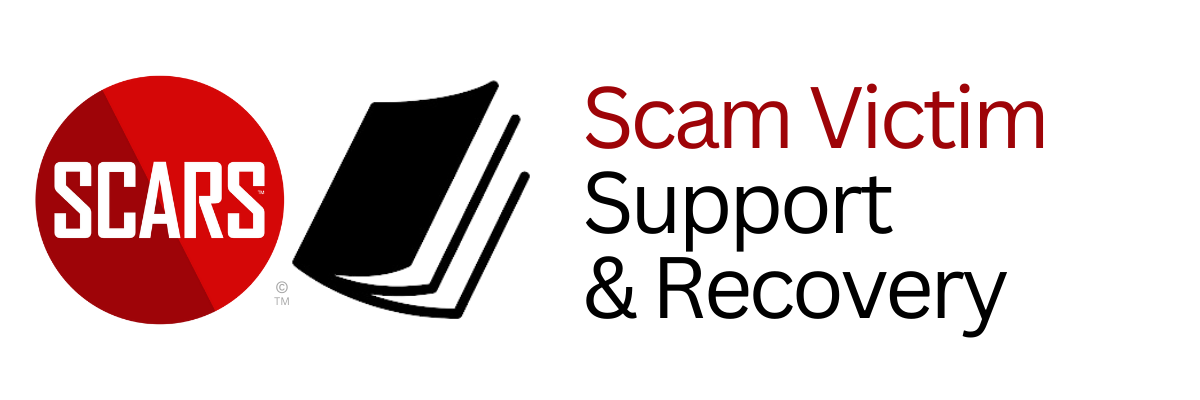
The Shadow Side of Scam Victim’s Personality Can Have a Profound Impact on the Psychological Recovery After the Scam is Over!
What is the Shadow Side of our Personality?
When a therapist refers to someone’s “shadow side,” they are talking about the aspects of a person’s personality or psyche that are hidden or less developed. This concept comes from Carl Jung, a Swiss psychiatrist and psychoanalyst, who described the shadow as the unconscious part of the psyche that contains repressed weaknesses, desires, and instincts. The shadow side includes traits and feelings that individuals may not recognize in themselves, often because these traits are considered negative or undesirable. For example, it might include tendencies like anger, jealousy, greed, or shame. These aspects are typically hidden from conscious awareness because they are seen as socially unacceptable or contrary to one’s self-image. Exploring the shadow side in therapy can help individuals gain a deeper understanding of themselves and integrate these hidden aspects into their conscious awareness. This process can lead to greater self-acceptance, emotional growth, and healthier behavior patterns. By acknowledging and working through their shadow side, individuals can become more whole and authentic, reducing the influence of unconscious behaviors on their lives.
For Traumatized Scam Victims
For traumatized scam victims, the “shadow side” can significantly impact their recovery by influencing their thoughts, emotions, and behaviors in ways they might not fully understand. The shadow side may harbor feelings of shame, guilt, anger, and distrust that the victim doesn’t consciously acknowledge or fully process. These hidden emotions can hinder recovery, manifesting as self-blame, difficulty trusting others, or excessive caution in future interactions. For instance, a victim might unconsciously hold onto guilt for being deceived, leading to low self-esteem or a fear of making decisions. Recognizing and mitigating the shadow side involves bringing these hidden aspects into conscious awareness. This process can be facilitated through therapy with a certified professional, who can help the victim explore and identify repressed feelings and thoughts. Techniques such as journaling, mindfulness, and guided self-reflection can also aid in this exploration. Recognizing the shadow side might involve noticing patterns of negative self-talk, irrational fears, or unexplained emotional reactions, which can signal deeper, unresolved issues. Once these elements are brought to light, they can be addressed and integrated into the victim’s conscious understanding of themselves. This can involve working through feelings of shame or anger, understanding that these emotions are natural responses to trauma, and developing healthier coping mechanisms. By accepting and integrating their shadow side, victims can move towards healing and regain a sense of control and self-worth. This process not only aids in recovery but also empowers individuals to build resilience against future challenges.
The Shadow Side Resists
The shadow side can cause resistance to acceptance in scam victims by reinforcing negative beliefs and emotions that are difficult to confront or acknowledge. These hidden aspects of the psyche often include deeply ingrained feelings of shame, guilt, and self-blame, which can be powerful and persistent. Victims may unconsciously internalize the idea that being scammed was a personal failure or weakness, leading to feelings of incompetence or unworthiness. Several elements within the shadow side contribute to this resistance:
Internalized Negative Beliefs: The shadow side may hold beliefs that align with societal stigmas about being scammed, such as the notion that one should have been more vigilant or smarter. These beliefs can make victims feel embarrassed or humiliated, creating a barrier to accepting that they are not to blame for the actions of the scammer.
Unacknowledged Vulnerabilities: Victims may fear confronting their vulnerabilities that were exploited in the scam, such as a desire for connection, trust, or financial security. The shadow side may contain fears of being seen as naive or gullible, which can prevent victims from accepting that these vulnerabilities are normal and not a cause for shame.
Fear of Judgement: The shadow side can also include a fear of judgment from others. Victims might worry about how others perceive them after the scam, fearing they will be seen as foolish or irresponsible. This fear can prevent them from openly discussing their experience and receiving the support they need to heal.
Difficulty Letting Go: The shadow side may resist letting go of negative feelings because they have become a part of the victim’s identity post-scam. Holding onto guilt and shame might feel like a way of maintaining control or avoiding future hurt, even though these emotions are ultimately harmful.
To address these issues, it’s essential for victims to engage in therapeutic work that helps them bring these shadow aspects into consciousness. This involves acknowledging and challenging the internalized negative beliefs, recognizing that vulnerabilities do not define one’s worth, and understanding that shame and guilt are natural but not deserved responses. Through this process, victims can learn to replace these negative feelings with self-compassion and self-forgiveness, paving the way for acceptance and healing.
Unacknowledged Vulnerabilities
Unacknowledged vulnerabilities in scam victims refer to the aspects of their personalities or life circumstances that made them susceptible to the scam in the first place. These vulnerabilities can vary widely among individuals and may include emotional, psychological, or situational factors. When these vulnerabilities are not acknowledged or understood, they can hinder the recovery process and prevent victims from fully accepting that they were not at fault for being scammed. Here are some key unacknowledged vulnerabilities that scam victims might experience:
Desire for Connection or Acceptance:
Many scams, especially romance scams, prey on individuals who are seeking connection, companionship, or validation. Victims might not recognize how their longing for a relationship or friendship made them more open to trusting strangers online.
This vulnerability can be difficult to acknowledge because it touches on deep emotional needs and fears of loneliness or rejection.
Financial Insecurity or Need:
Scammers often target individuals facing financial difficulties, promising quick financial gains or investments. Victims might not fully realize how their financial stress or desperation influenced their decision-making.
Admitting financial vulnerability can be challenging due to societal stigmas around financial instability and the shame associated with being in a precarious situation.
Technical Ignorance
Technical ignorance can be a significant vulnerability. Victims might not understand how their limited knowledge of technology and online threats made them targets for phishing, identity theft, or other scams.
Acknowledging this gap in knowledge can be uncomfortable, as it may involve confronting feelings of inadequacy or a lack of technological savvy.
Emotional Distress or Life Transitions:
People going through significant life changes or emotional distress—such as divorce, job loss, or grief—may be more vulnerable to scams. Scammers can exploit the emotional turmoil and reduced decision-making capacity that often accompany these experiences.
Recognizing this vulnerability requires confronting painful emotions and the reality of how these circumstances impacted their actions.
Trusting Nature or Altruism:
A natural inclination to trust others or a strong desire to help can be exploited by scammers who present themselves as in need of assistance or as trustworthy figures.
Victims might struggle to reconcile these positive traits with the negative outcome of the scam, making it hard to accept that these qualities were manipulated.
Fear of Missing Out (FOMO) or Greed:
Scams often leverage the fear of missing out on a lucrative opportunity or appeal to greed by offering unrealistically high returns on investments. Victims might not recognize how these psychological triggers influenced their decisions.
Acknowledging these impulses can be uncomfortable, as they can be associated with negative self-judgments about being too greedy or naive.
By identifying and understanding these vulnerabilities, scam victims can gain a clearer perspective on their experience. It helps them to see that the scammer skillfully exploited these aspects, rather than it being a result of their own faults or failings. This awareness is crucial for developing self-compassion, as it allows victims to separate their vulnerabilities from their sense of self-worth. It also provides an opportunity to learn and strengthen their defenses against future scams by addressing these areas, whether through increased cybersecurity knowledge, emotional support, or financial literacy.
How is the Shadow Side Formed or Developed
The concept of the “shadow side” originates from the work of Carl Jung, a Swiss psychiatrist and psychoanalyst who is considered one of the founding figures of modern psychology. The shadow side refers to the unconscious parts of the psyche that an individual represses or denies. These aspects are often hidden because they are considered negative, undesirable, or incompatible with the individual’s conscious self-image. The shadow side includes a wide range of traits, emotions, desires, and impulses that a person may not fully acknowledge or accept.
Components of the Shadow Side
Repressed Traits and Desires: The shadow side encompasses traits and desires that are suppressed because they do not align with societal norms or the individual’s own moral standards. For example, aggression, jealousy, greed, and vanity might be repressed because they are seen as socially unacceptable or contrary to the person’s self-concept.
Unconscious Fears and Insecurities: It also includes fears and insecurities that are buried deep within the unconscious mind. These can manifest as irrational anxieties, self-doubt, or negative beliefs about oneself. For instance, a person might harbor a fear of failure that prevents them from taking risks, yet they are not fully aware of this fear’s impact on their behavior.
Untapped Potential: The shadow side isn’t solely negative; it can also contain positive aspects that are underdeveloped or unrecognized. These could be talents, desires, or capacities that the individual has not yet explored or expressed, possibly due to fear of judgment or failure.
Cultural and Personal Taboos: Cultural norms and personal upbringing play significant roles in shaping what becomes part of the shadow. Certain behaviors or thoughts might be deemed unacceptable or taboo, leading individuals to push these aspects into the unconscious. For example, societal expectations around gender roles can suppress certain emotions or traits, such as men feeling pressured to hide vulnerability.
How the Shadow Side Forms
The formation of the shadow side is a natural part of psychological development. As individuals grow and adapt to societal expectations, they learn to hide or suppress traits that are deemed inappropriate or undesirable. This process starts early in childhood and continues throughout life, influenced by family, culture, education, and personal experiences. Over time, these hidden aspects accumulate in the unconscious mind, forming the shadow.
Effects of the Shadow Side
Projection: One of the most common manifestations of the shadow side is projection, where individuals attribute their own unwanted traits or feelings to others. For example, someone who represses their anger might perceive others as being overly aggressive or hostile, even when this perception is not justified.
Behavioral Influences: The shadow can influence behavior in subtle and often unconscious ways. For instance, repressed desires might surface through impulsive actions or hidden insecurities might lead to defensive or compensatory behaviors.
Psychological Tension: The disconnect between the conscious self and the shadow can create internal tension and conflict. This tension might manifest as anxiety, depression, or other forms of psychological distress, as the individual struggles to reconcile these disparate parts of themselves.
Integrating the Shadow Side
Integrating the shadow side involves acknowledging and accepting these hidden aspects of the self. This process, often facilitated by therapy or self-reflection, allows individuals to confront their repressed traits and emotions, understand their origins, and integrate them into a more complete self-concept. By doing so, they can reduce the negative impact of the shadow and harness its potential for personal growth.
Self-Awareness: The first step in integration is developing self-awareness. This involves recognizing and admitting the existence of the shadow and being willing to explore its contents.
Understanding and Acceptance: Understanding the origins and functions of the shadow aspects can lead to greater acceptance. For example, realizing that certain repressed traits were adaptive responses to early life experiences can help diminish their power.
Expressing and Integrating: Finally, expressing and integrating the shadow involves finding constructive ways to acknowledge and incorporate these aspects into one’s conscious life. This might include expressing repressed emotions in a healthy manner, exploring untapped talents, or adjusting one’s self-image to include previously denied traits.
By integrating the shadow side, individuals can achieve greater psychological balance and authenticity, reducing the likelihood of projection and other unconscious behaviors. This process also allows for the acceptance of a more nuanced and complete self, fostering emotional resilience and personal growth.
The Shadow Side and Trauma
The shadow side is not solely caused by past traumas, but past traumas can significantly contribute to its formation. The shadow side encompasses all the parts of ourselves that we repress, deny, or are unaware of, including traits, desires, emotions, and impulses that we find uncomfortable or unacceptable. These aspects can be influenced by various factors, including societal norms, cultural expectations, personal upbringing, and past experiences, including traumas.
How Past Traumas Contribute to the Shadow Side
Repression of Painful Memories: Traumatic experiences can lead individuals to repress painful memories and the associated emotions, such as fear, anger, or sadness. These repressed emotions become part of the shadow because they are too distressing to face or deal with consciously.
Defense Mechanisms: As a way to cope with trauma, individuals may develop defense mechanisms like denial, suppression, or projection. These mechanisms help them avoid confronting painful realities or emotions but can lead to the formation of shadow aspects. For example, someone who was criticized harshly in childhood might repress their own critical tendencies and instead perceive others as overly judgmental.
Distorted Self-Image: Traumatic events can distort an individual’s self-image, leading them to see certain traits or emotions as dangerous or undesirable. For instance, a person who experienced trauma related to expressing vulnerability might see vulnerability as a weakness and therefore repress it, pushing it into the shadow.
Unresolved Anger or Guilt: Trauma can leave individuals with unresolved feelings of anger, guilt, or shame. If these emotions are not addressed, they can become part of the shadow, influencing behavior in unconscious ways. For example, repressed guilt might manifest as self-sabotaging behavior or unacknowledged anger might lead to outbursts or aggression.
Fear of Re-experiencing Trauma: The fear of re-experiencing trauma can cause individuals to repress any traits, emotions, or situations that remind them of the traumatic event. This avoidance can lead to a larger shadow, as more aspects of the self are denied or pushed away.
Not All Shadow Aspects Are Trauma-Related
It’s important to note that not all shadow aspects are the result of trauma. The shadow side also includes traits that are simply deemed socially unacceptable or inconsistent with one’s self-image, even if they are not linked to traumatic experiences. For example, a person might repress their ambition because they believe it conflicts with their self-image as a humble or selfless individual, even if they have not experienced trauma related to ambition.
Integrating Trauma-Related Shadow Aspects
Recognizing and integrating shadow aspects, especially those related to past traumas, is a crucial step in healing and personal growth. This process often involves:
Acknowledging the Trauma: Acknowledging and accepting that the trauma occurred is a critical first step. This includes recognizing how the trauma has impacted one’s behavior, emotions, and self-image.
Processing Repressed Emotions: Working through repressed emotions related to the trauma, such as anger, fear, or sadness, can help individuals understand and integrate these feelings rather than keeping them in the shadow.
Reconstructing a Positive Self-Image: Part of integrating the shadow involves reconstructing a self-image that includes all aspects of the self, even those that were previously denied or repressed. This can lead to greater self-acceptance and a more authentic expression of oneself.
Seeking Professional Support: Working with a therapist or counselor can be particularly beneficial for integrating trauma-related shadow aspects. Professionals can provide a safe space to explore and process these parts of oneself, offering guidance and support.
In summary, while past traumas can contribute significantly to the formation of the shadow side, they are not the only factor. The shadow includes all parts of ourselves that we are unwilling or unable to acknowledge, influenced by a wide range of experiences and factors, including but not limited to trauma.
Shadow Side/Shadow Self
In modern psychology, the concept of the “shadow side” is often referred to as the “shadow self” or simply “the shadow.” In contemporary psychology, the shadow is still recognized, though it might not always be labeled explicitly as such. It’s often discussed in terms of:
Unconscious Mind: The shadow is considered part of the unconscious mind, where thoughts, memories, and emotions that are not immediately accessible to conscious awareness are stored.
Repressed or Suppressed Emotions: Modern psychology often speaks of repressed or suppressed emotions, which are similar to shadow aspects. These are feelings or impulses that individuals do not acknowledge or accept as part of themselves, often because they are uncomfortable or socially unacceptable.
Defense Mechanisms: The concept of the shadow overlaps with psychological defense mechanisms such as repression, projection, denial, and displacement. These mechanisms are ways the psyche defends itself against unpleasant thoughts or realities.
Implicit Biases and Blind Spots: In discussions about implicit biases and unconscious prejudices, the shadow concept is relevant. These are attitudes or stereotypes that affect understanding, actions, and decisions in an unconscious manner.
Internal Family Systems (IFS): This therapeutic model describes different parts of the self, including exiled parts (similar to shadow aspects) that hold painful emotions or memories that the conscious mind tries to avoid.
Hidden or Disowned Selves: Some modern therapists and coaches use terms like “hidden self” or “disowned selves” to describe aspects of the personality that are denied or pushed away, similar to Jung’s shadow.
While the specific terminology and frameworks may vary, the underlying idea of the shadow — aspects of ourselves that we are unaware of or reject — remains a relevant and valuable concept in modern psychology. It emphasizes the importance of self-awareness and the integration of all parts of the self for psychological well-being.
Summary
The “shadow side” refers to unconscious parts of the psyche that contain repressed traits, desires, and emotions. Originating from Jungian psychology, it includes negative or socially unacceptable aspects of oneself, often hidden from conscious awareness. This shadow side can influence behaviors and attitudes through projection, where individuals attribute these hidden aspects to others. Modern psychology discusses similar concepts under terms like the unconscious mind, repressed emotions, defense mechanisms, implicit biases, and disowned selves. Recognizing and integrating the shadow side is crucial for personal growth and psychological well-being, leading to greater self-awareness and acceptance.
-/ 30 /-
What do you think about this?
Please share your thoughts in a comment below!
-/ 30 /-
What do you think about this?
Please share your thoughts in a comment below!
SCARS LINKS: AgainstScams.org RomanceScamsNOW.com ContraEstafas.org ScammerPhotos.com Anyscam.com ScamsNOW.com
reporting.AgainstScams.org support.AgainstScams.org membership.AgainstScams.org donate.AgainstScams.org shop.AgainstScams.org
youtube.AgainstScams.org linkedin.AgainstScams.org facebook.AgainstScams.org
Important Information for New Scam Victims
- Please visit www.ScamVictimsSupport.org – a SCARS Website for New Scam Victims & Sextortion Victims.
- SCARS Institute now offers its free, safe, and private Scam Survivor’s Support Community at www.SCARScommunity.org – this is not on a social media platform, it is our own safe & secure platform created by the SCARS Institute especially for scam victims & survivors.
- SCARS Institute now offers a free recovery learning program at www.SCARSeducation.org.
- Please visit www.ScamPsychology.org – to more fully understand the psychological concepts involved in scams and scam victim recovery.
If you are looking for local trauma counselors, please visit counseling.AgainstScams.org
If you need to speak with someone now, you can dial 988 or find phone numbers for crisis hotlines all around the world here: www.opencounseling.com/suicide-hotlines
Statement About Victim Blaming
Some of our articles discuss various aspects of victims. This is both about better understanding victims (the science of victimology) and their behaviors and psychology. This helps us to educate victims/survivors about why these crimes happened and not to blame themselves, better develop recovery programs, and help victims avoid scams in the future. At times, this may sound like blaming the victim, but it does not blame scam victims; we are simply explaining the hows and whys of the experience victims have.
These articles, about the Psychology of Scams or Victim Psychology – meaning that all humans have psychological or cognitive characteristics in common that can either be exploited or work against us – help us all to understand the unique challenges victims face before, during, and after scams, fraud, or cybercrimes. These sometimes talk about some of the vulnerabilities the scammers exploit. Victims rarely have control of them or are even aware of them, until something like a scam happens, and then they can learn how their mind works and how to overcome these mechanisms.
Articles like these help victims and others understand these processes and how to help prevent them from being exploited again or to help them recover more easily by understanding their post-scam behaviors. Learn more about the Psychology of Scams at www.ScamPsychology.org
SCARS INSTITUTE RESOURCES:
If You Have Been Victimized By A Scam Or Cybercrime
♦ If you are a victim of scams, go to www.ScamVictimsSupport.org for real knowledge and help
♦ SCARS Institute now offers its free, safe, and private Scam Survivor’s Support Community at www.SCARScommunity.org/register – this is not on a social media platform, it is our own safe & secure platform created by the SCARS Institute especially for scam victims & survivors.
♦ Enroll in SCARS Scam Survivor’s School now at www.SCARSeducation.org
♦ To report criminals, visit https://reporting.AgainstScams.org – we will NEVER give your data to money recovery companies like some do!
♦ Follow us and find our podcasts, webinars, and helpful videos on YouTube: https://www.youtube.com/@RomancescamsNowcom
♦ Learn about the Psychology of Scams at www.ScamPsychology.org
♦ Dig deeper into the reality of scams, fraud, and cybercrime at www.ScamsNOW.com and www.RomanceScamsNOW.com
♦ Scam Survivor’s Stories: www.ScamSurvivorStories.org
♦ For Scam Victim Advocates visit www.ScamVictimsAdvocates.org
♦ See more scammer photos on www.ScammerPhotos.com
You can also find the SCARS Institute’s knowledge and information on Facebook, Instagram, X, LinkedIn, and TruthSocial
Psychology Disclaimer:
All articles about psychology and the human brain on this website are for information & education only
The information provided in this and other SCARS articles are intended for educational and self-help purposes only and should not be construed as a substitute for professional therapy or counseling.
Note about Mindfulness: Mindfulness practices have the potential to create psychological distress for some individuals. Please consult a mental health professional or experienced meditation instructor for guidance should you encounter difficulties.
While any self-help techniques outlined herein may be beneficial for scam victims seeking to recover from their experience and move towards recovery, it is important to consult with a qualified mental health professional before initiating any course of action. Each individual’s experience and needs are unique, and what works for one person may not be suitable for another.
Additionally, any approach may not be appropriate for individuals with certain pre-existing mental health conditions or trauma histories. It is advisable to seek guidance from a licensed therapist or counselor who can provide personalized support, guidance, and treatment tailored to your specific needs.
If you are experiencing significant distress or emotional difficulties related to a scam or other traumatic event, please consult your doctor or mental health provider for appropriate care and support.
Also read our SCARS Institute Statement about Professional Care for Scam Victims – click here
If you are in crisis, feeling desperate, or in despair, please call 988 or your local crisis hotline – international numbers here.
More ScamsNOW.com Articles
A Question of Trust
At the SCARS Institute, we invite you to do your own research on the topics we speak about and publish. Our team investigates the subject being discussed, especially when it comes to understanding the scam victims-survivors’ experience. You can do Google searches, but in many cases, you will have to wade through scientific papers and studies. However, remember that biases and perspectives matter and influence the outcome. Regardless, we encourage you to explore these topics as thoroughly as you can for your own awareness.





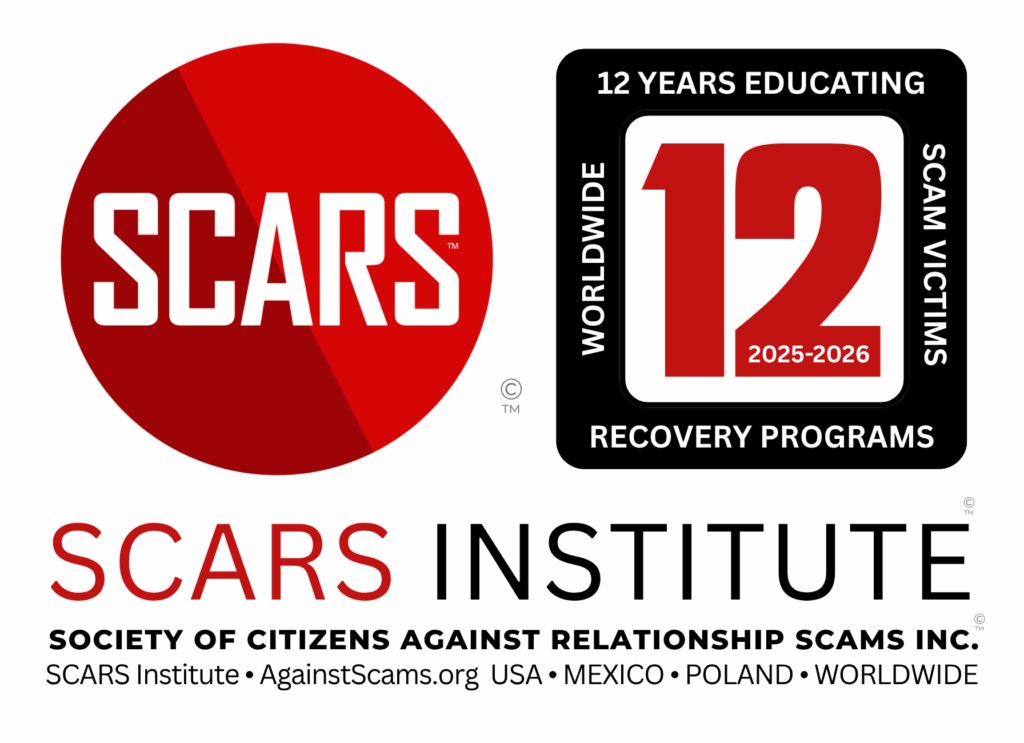


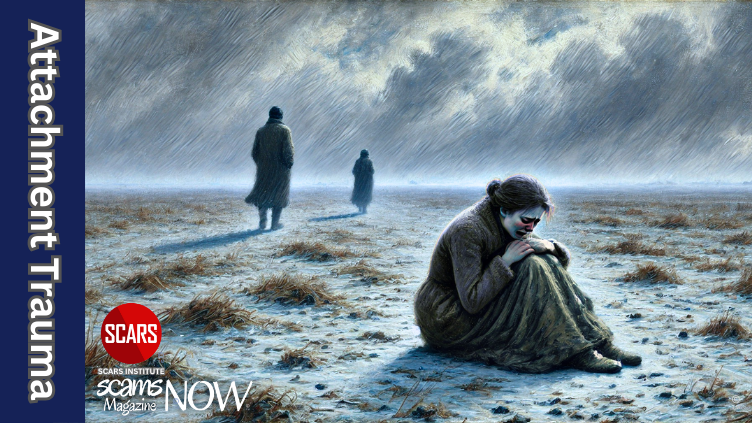


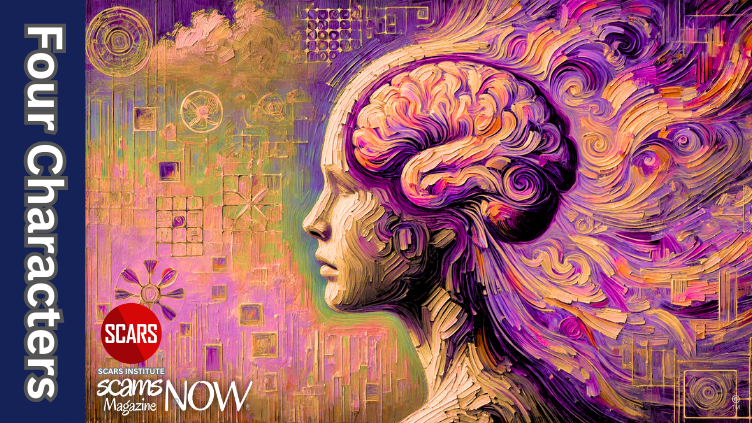



![NavyLogo@4x-81[1] Scam Victim's Shadow Side And What It Means For Recovery - 2024](https://scamsnow.com/wp-content/uploads/2025/04/NavyLogo@4x-811.png)

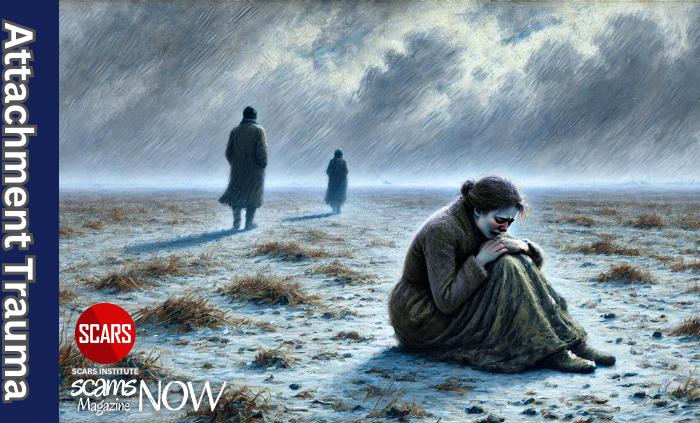
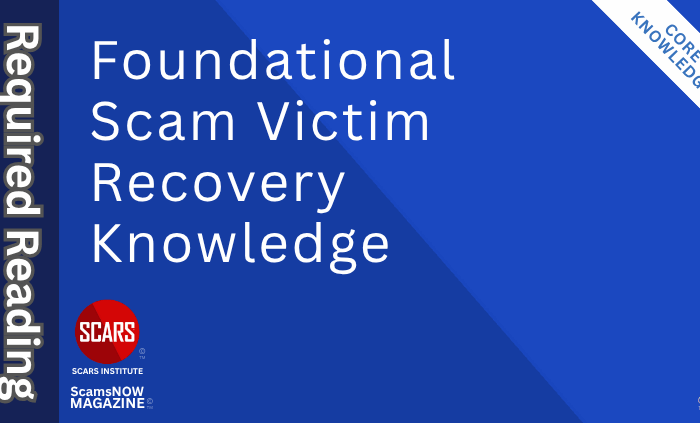

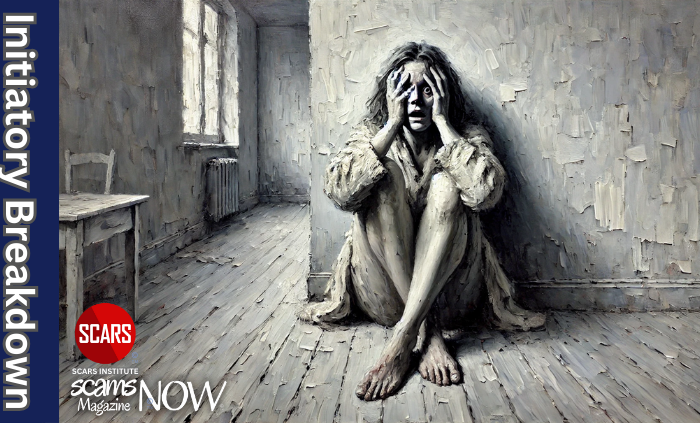
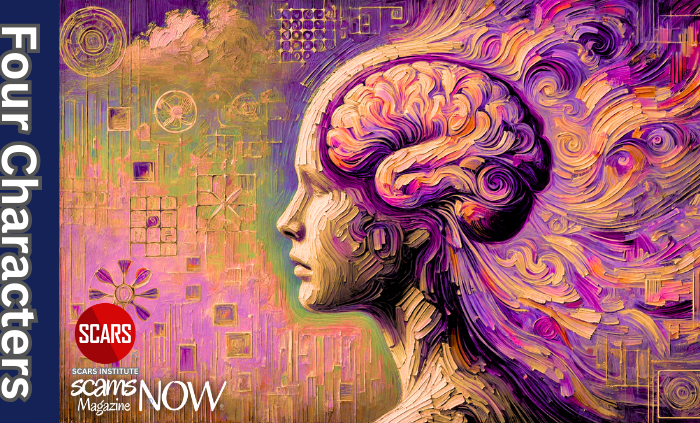



![scars-institute[1] Scam Victim's Shadow Side And What It Means For Recovery - 2024](https://scamsnow.com/wp-content/uploads/2025/04/scars-institute1.png)
![niprc1.png1_-150×1501-1[1] Scam Victim's Shadow Side And What It Means For Recovery - 2024](https://scamsnow.com/wp-content/uploads/2025/04/niprc1.png1_-150x1501-11.webp)
